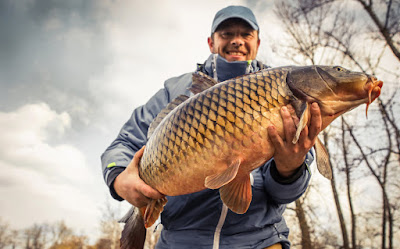Carp is a term used for several types of fish that are in the Cyprindae family. It is a kind of freshwater fish which is native to Asia and Europe but has been imported to many other countries with mixed results. More and more anglers develop an interest in carp because they are widespread and can tolerate a variety of water conditions. Though the carp is not the best for eating, but this muscular fish puts up a good fight and can be great for testing out or teaching new fishing techniques.
1.Suggested fishing tackles
- Fishing rod: Choose a composite, carbon fiber, or e-glass fishing rod.
- Fishing baits: Obtain sweet corn or boilies (Boilies are fishing bait made of fish or milk proteins, eggs, and grains, and are an alternative to corn.) for bait.
- Fishing line: Get a strong monofilament or braided line.
- Fishing hook: Purchase barbed hooks to keep the fish on the line (Make sure to check that barbed hooks are legal where you are fishing, as they are restricted in some fishing areas).
2.How to catch the carp
Compared with catching other fish, the biggest difference when catching the carp is you need chum the sweet corn on top of your fishing spot. Then we will mainly discuss the skills of catch the carp.
- The suitable spot of catching carp: Carp will feed on nearby vegetation and the insects and other animals that feed on it as well. These are ideal areas to set up when fishing for carp. Carp prefer shallow water during hot weather and deeper water during cold weather.
- The keen early morning arrivals have come and gone. Although you’ve probably got to be off by dark, those last three hours can be a great time for a bite or two as the fish can really turn on. You can end up with the fishery to yourself. If you can get a half-day or ‘cheaper’ evening ticket, even better.
- Add plenty of salt to particle baits, especially the cooked types like hemp, maize, tares, beans, partiblend seeds, maple peas and chick peas. Carp love the taste of salty foods. As a rough guide, add one tablespoon of salt to 5-litre dry particles. These are also good cheap baits to use!
- When the water is cold such as in the winter, try casting your rigs a little more frequently, and target different areas in order to place the hook bait close to the fish. Cold water slows down the movements of carp so there's less chance the fish will swim towards your bait. In the summer, you can lay traps in possible patrolling areas and wait for the carp to find the bait.
- It goes without saying that on such intimate venues and fishing just over the stalks' that bankside noise needs to be kept to a minimum. Try and lower or swing baits into position, don’t cast.
- If you're fishing the new water, try using brightly colored bait with high attract smells. Only switch if you know there are carp in the swim and you are having no action.
- If you can, try to locate the fish before choosing a peg. Locating the carp, or any possible patrolling area is a largest part of carp fishing success. And please remember it that do not always follow the wind for locating carp. Smaller waters are less affected by winds. Also, some of the bigger carp in larger waters may NOT follow the wind because angling pressure has taught them it could be dangerous!


没有评论:
发表评论